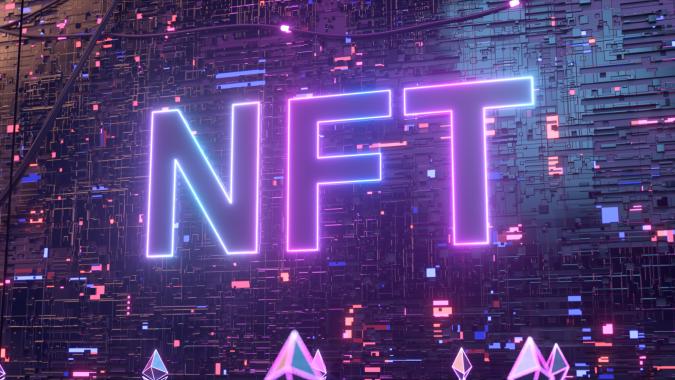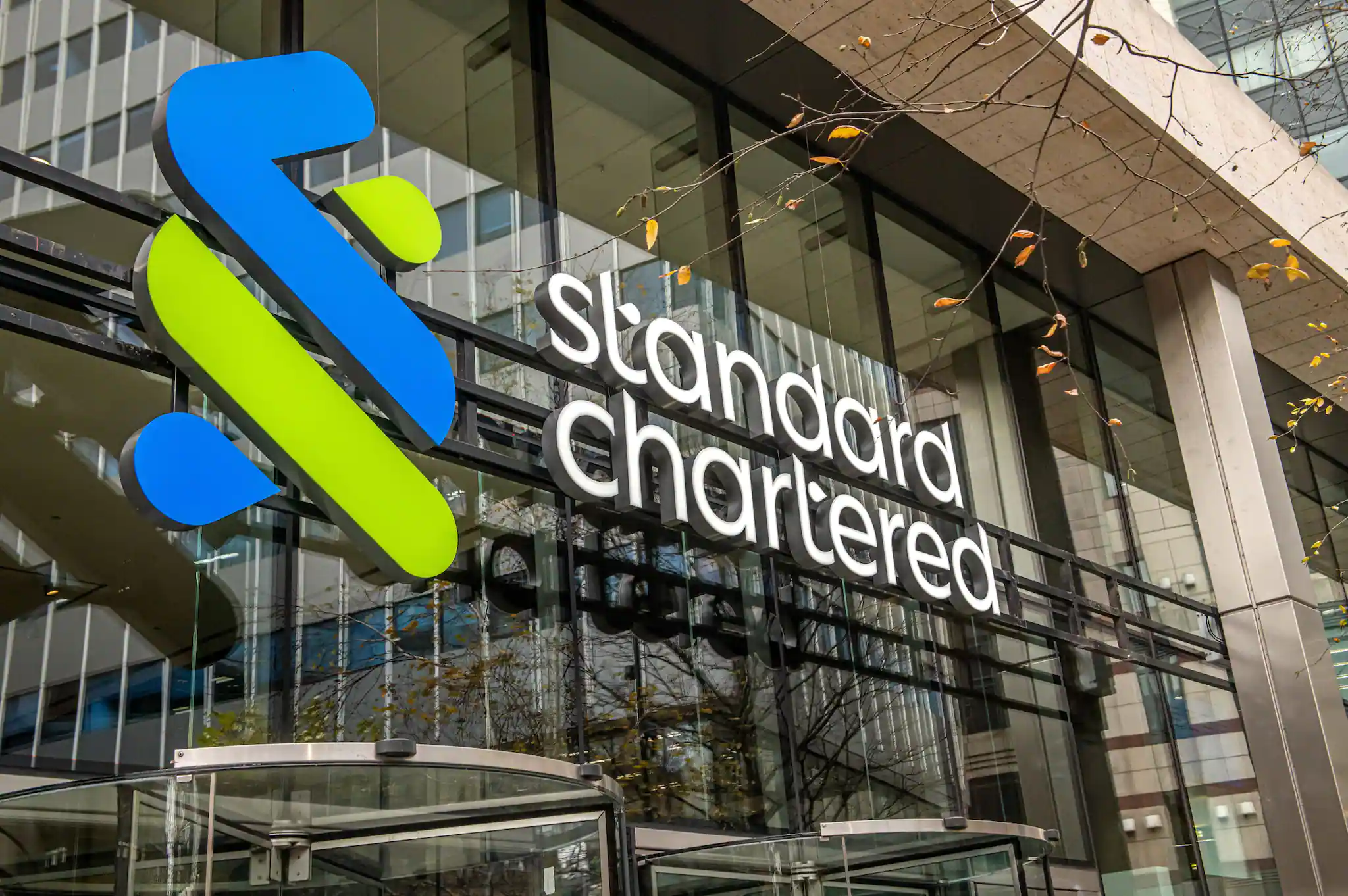A Non-Fungible Token (NFT) is an item belonging to the blockchain. Due to its irreplaceable characteristics and decentralized attributes, it can be used to symbolize unique ownership attributes such as the ownership of a piece of land in the metaverse or art forms such as the Cryptopunk.
Key takeaways:
- What is NFT?
- How does NFT work?
- How to earn with NFT?

Introduction to Non-Fungible Tokens
2021 was the year of the NFT, and the relevant major events have been dazzling: the Bored Ape Yacht Club has reached a 100ETH floor thus far, the Phanta Bear created by Jay Chou topped the list of NFT projects, and various pop culture influencers and celebrities like Justin Bieber, Post Malone and Shaquille O’Neal have each accumulated their share of NFTS like BAYC and Cryptopunks. Powerful companies like Adidas, Nike and Wal-Mart have plans to capture their share of the metaverse through NFTs, and mainstream media has since recognised the NFT as a reliable proof of authenticity and ownership of digital assets. Everyone from significant stars to internet giant enterprises and well-known media has all entered the NFT market in their own ways. Meanwhile, with the recent unfolding of concepts such as NFT games and metaverse, the NFT will undoubtedly create a larger wave of explosive opportunities. Next, this article will focus on the definition, characteristics and application areas of NFTs.
What is NFT
Before explaining Non-Fungible Tokens (NFTs), we need to understand the concept of Fungible tokens. A Fungible Token (FT) refers to tokens that can be replaced with each other and can be split at will. Assuming that both you and I have one Ethereum coin each, there is no difference in essence, and none of our Ethereum coins is unique. In contrast, the NFT has a unique, inseparable nature, and uses blockchain tech just like cryptocurrencies like Bitcoin. It is an entry on the blockchain ledger that cannot be tampered with, which allows a way to mark ownership of natively digital assets (i.e., assets that exist or originate from the digital world) that exist outside of a centralized service or database. For example, we can mint game props, tickets and digital artwork as NFTs via blockchain, thus giving these assets uniqueness and non-replicability.
The NFT is still considered new technology, with a development history of fewer than five years. The most prominent NFT project on the blockchain is the CryptoPunks on Ethereum which consists of 8-bit artwork in 24×24 pixels format, while the concept of NFT was only popularized on November 28 2017 when the blockchain game CryptoKitties went live and prices of the virtual cats soared. Since then, the main application scenarios for NFTs have slowly expanded from crypto games to collectables, artwork, domain names, virtual identities and other areas. Among these, DeFi, gaming and artwork have led several waves of NFT-related development booms.
The application scenarios of NFTs are very abundant, including property rights, games etc. where NFTs can represent a specific intellectual property such as a painting, song, patent, film or photo. In this field, the uniqueness of NFTs plays the role of a patent office, which registers unique identifiers for copyright and identity patterns.
For example, NFTs can be used for in-game pets, weapon props or game costumes, such as CryptoKitties that have unique identifying numbers for each cat.
Another example is representing real-world assets in tokens, which allows the circulation of such financial assets
Lastly, NFTs can also be used for records and proof of identity. Verifying identity and birth certificates with NFTs can assure accurate results, and when stored in chains such as Ethereum will prevent abuse and tampering,
NFT STaking and Collectibles as a new application
The application scenarios of NFT are very rich, including property rights, games, etc. are its application scope. The specific application scenarios are as follows:
in the field of intellectual property. NFT can replace a painting or a song, a patent or a video, a photo and other intellectual property rights. In this field, the uniqueness of NFT acts as a patent office, which can copyright each unique thing and identify patents.
For example, it can be used as pets in the game or other items such as weapon props, game clothing, etc. In 2018, the encrypted cat became popular with NFT. In this game, each cat has a special mark number.
Second example: Physical assets. Real real estate or other real assets can also be tokenized by NFT. It can be used in financial markets such as the circulation of assets.
Additionally, NFTs can be used for records and identification. Verification of identity and birth certificates, driver’s licenses or academic certificates, etc. using NFTs can ensure accurate and efficient results. These are stored in digital form to prevent misuse and tampering.
NFT staking and digital art collection are new applications of NFT
What is NFT staking? How does it work? NFT staking refers to the way to lock NFTs on a platform or protocol to earn staking rewards and other privileges. In this way, NFT holders can earn passive income while still enjoying NFT ownership. In fact, NFT staking is still in its infancy, but it is similar to the operational concept of other Decentralized Finance (DeFi) liquidity mining. The underlying principle is that after users stake NFTs to the platform, the rewards they get will be determined by the Annual Percentage Yield (APY), the duration of pledge and the number of NFTs pledged. Due to the unique nature of NFTs, investors and collectors usually choose to hold long-term and speculate, and NFT staking provides them with new opportunities to monetize assets, which can attract more people to participate and increase the market demand for staking such NFTs.
Staking NFTs is not much different than staking Bitcoin (BTC) or Ethereum (ETH). All you need to do is prepare your cryptocurrency wallet to start your NFT journey. However, not all NFTs can be staked to earn rewards. Specific requirements vary from project to project, and it is best to verify the requirements of the selected project before purchasing an NFT.
NFT staking is a new way to earn passive income in the cryptocurrency space. Holders can earn rewards by locking up NFT assets in a decentralized finance (DeFi) platform, all without having to sell their NFT collectables.
On the one hand, NFT holders are equivalent to owning any form of digital archives, and the files themselves can have unlimited copying and redistribution possibilities; on the other hand, because of the blockchain technology, the NFT holder can prove himself as the real owner of the file, helping secure ownership of digital assets.
Similar to DeFi liquidity mining, NFT staking relies on a proof-of-stake (PoS) mechanism to reward participants.
As far as individual investors are concerned, because the overall supply of NFTs is low, the staking returns are rewarding. But from a longer-term perspective, NFT staking has already surpassed the significance of digital art collection and has ushered in a new wave of applications.
In what ways can NFT staking be realized?
As of the end of 2021, most NFT staking is possible in play-to-earn (P2E) games. MOBOX and Zookeeper are typical examples. Some projects have also built their own NFT staking function on the platform, such as Doge Capital.
For example, Zookeeper (ZOO) is a gamified liquidity mining DApp that can pledge NFTs to different liquidity pools. All of Zookeeper’s liquidity pools support a dual mining mechanism, and users can earn both ZOO utility tokens and WanSwap Liquidity Provider (WSLP) tokens as rewards. Users who want to increase their APY rewards are allowed to lock up their tokens for a period of up to 180 days. Additionally, staking ZooBooster NFTs maximizes rewards and shortens the lock-up period of WSLP. For example, the NFT card ZooBooster can be obtained by purchasing gold chests in the DApp or by staking ZOO tokens.
With the help of NFTs, collectors can trade artwork without restrictions in a blockchain system that is accessible to everyone. Bypassing the art intermediary channel. digital artwork and collectables appreciate in value over time. Some NFT projects will share revenue with the NFT holder community, mainly from secondary market sales and royalties.
The NFT market is continuously growing and evolving, with developers, artists and collectors constantly exploring new use cases for their NFT collectables. The most novel use case is the use of NFTs as utility tokens for staking platforms. For example, NFT collectors stake NFTs in certain game metaverses to improve the skills of game characters and earn additional rewards.
Advantages of NFTs
NFT offers many advantages to content creators, sellers, and buyers, depending on the platform on which they are created. With NFTs in Ethereum, smart contracts are automatic: the code in a smart contract cannot be changed once it is added to the blockchain, and transactions cannot be changed once the criteria are met and verified. This provides security for both creators and purchasers.
For creators, blockchain technology and NFT provides a unique opportunity for artists and content creators to monetize their goods. For example, artists no longer need to rely on galleries or auction houses to sell their artwork. They can sell them directly to consumers as NFTs, which also allows them to retain more of their profits.
For collectors, NFT allows collectors to prove ownership in the digital world. Before the invention of NFT, it was impossible to prove ownership or authenticity of digital artwork or collectables. With NTF, investors now have true ownership of the irreplaceable tokens they purchase. This creates value when digital assets are tokenized. Because this proves its authenticity and ownership, it also means it can be easily trusted and transferable.
Disadvantages of NFTs
Any market has risks. NFT markets such as digital art and collectables are growing at a rapid pace. However, this does not guarantee that this investment will always be safe. In particular, investing in NFTs has its unique risks. After all, this is still a nascent technology. In particular, new investors may not have enough experience to judge the performance of NFTs yet. When investing in NFT virtual assets, emerging market volatility, illiquidity, and fraud risk are key precautions to take note of.
The valuation of NFTs depends heavily on authenticity, creativity, and the perception of owners and buyers. Currently, NFT market sentiment and demand will drive prices rather than fundamental, technical or economic indicators. Many related companies may appear to be doing well in the stock market, but there may be no actual business income and profit in Metaverse and NFT. Most of the relevant plans in the Metaverse field are still in the initial stage, and the R&D investment has likely not come to fruition.
In addition, the risks associated with intellectual property rights cannot be ignored. The investor who buys NFTs may only get the right to use the NFT itself, not the intellectual property. Therefore, in the metadata of the underlying smart contract, it is important to understand one’s individual ownership of specific NFTs, such as copyrights, trademarks, patents, moral rights, and rights of publicity.
There are currently three main ways to participate in NFTs:
- Invest in tokens related to NFT concepts:
Invest in tokens related to the NFT concept. These tokens are not NFTs themselves, but the native governance tokens or functional tokens of various NFT projects, or public chain tokens that provide infrastructure for NFTs such as Ronin or Tezos.
At present, there are at least 100 NFT-related coins, and the total market value of the top 100 NFT tokens on Coingecko is $24.8 billion. Users who are interested in investing may wish to go to the MEXC popular NFT tokens section and select the corresponding token for trading.
- Buy NFT assets directly:
Directly subscribe/purchase NFT items in the primary or secondary market, such as crypto artwork, collectables, game props, virtual land, etc. The top 10 NFT items are mainly focused on crypto-collectables, games, and virtual land. You can go to participate in the primary market auctions of some large art collectables, or choose your favourite NFTs on secondary trading platforms such as OpenSea or LooksRare. However, the condition is that you need to prepare your wallet funds and platform account before you can officially trade.
It is worth noting that investing in NFT items requires a certain level of appreciation, artistic value judgment ability. for investors. In addition, it is also necessary to evaluate and measure its blockchain foundation, scarcity, age, release speed and other dimensions. Therefore, this approach reflects more of an identity and social attributes intuition and is more suitable for users who are confident in their curation abilities and interest.
- Mint and issue unique NFTs:
In addition to the above two methods, issuing your own NFT is also one of the ways to benefit. It should be emphasized that if you want to issue and mint an NFT yourself, then you can choose to upload files on NFT minting platforms such as OpenSea and Rarible to mint and issue. At present, a variety of file forms and formats are currently supported, including visual files such as JPG, PNG, GIF, MP3 music files, GLB 3d files etc. Creators can prepare the files in advance, connect the wallet on the platform, upload the files according to the prompts, and set up the NFT description, the royalty rate, and other relevant information.
Summary
The ability of NFT to store ownership and identity data on the blockchain will enhance data integrity and privacy, as well as multifaceted applications in a variety of fields, including intellectual property and publishing. As a result, these assets can be transferred and managed in a simple, trustless manner, ultimately serving to reduce the frictional costs for all types of transactions. While mainstream crypto assets such as Bitcoin and Ether are also recorded in the blockchain, NFT differs from them in that anyone’s an NFT token is irreplaceable and indivisible. In the future, the NFT will become a key component of a blockchain-driven digital economy.
Join MEXC and Get up to $10,000 Bonus!
Sign Up

